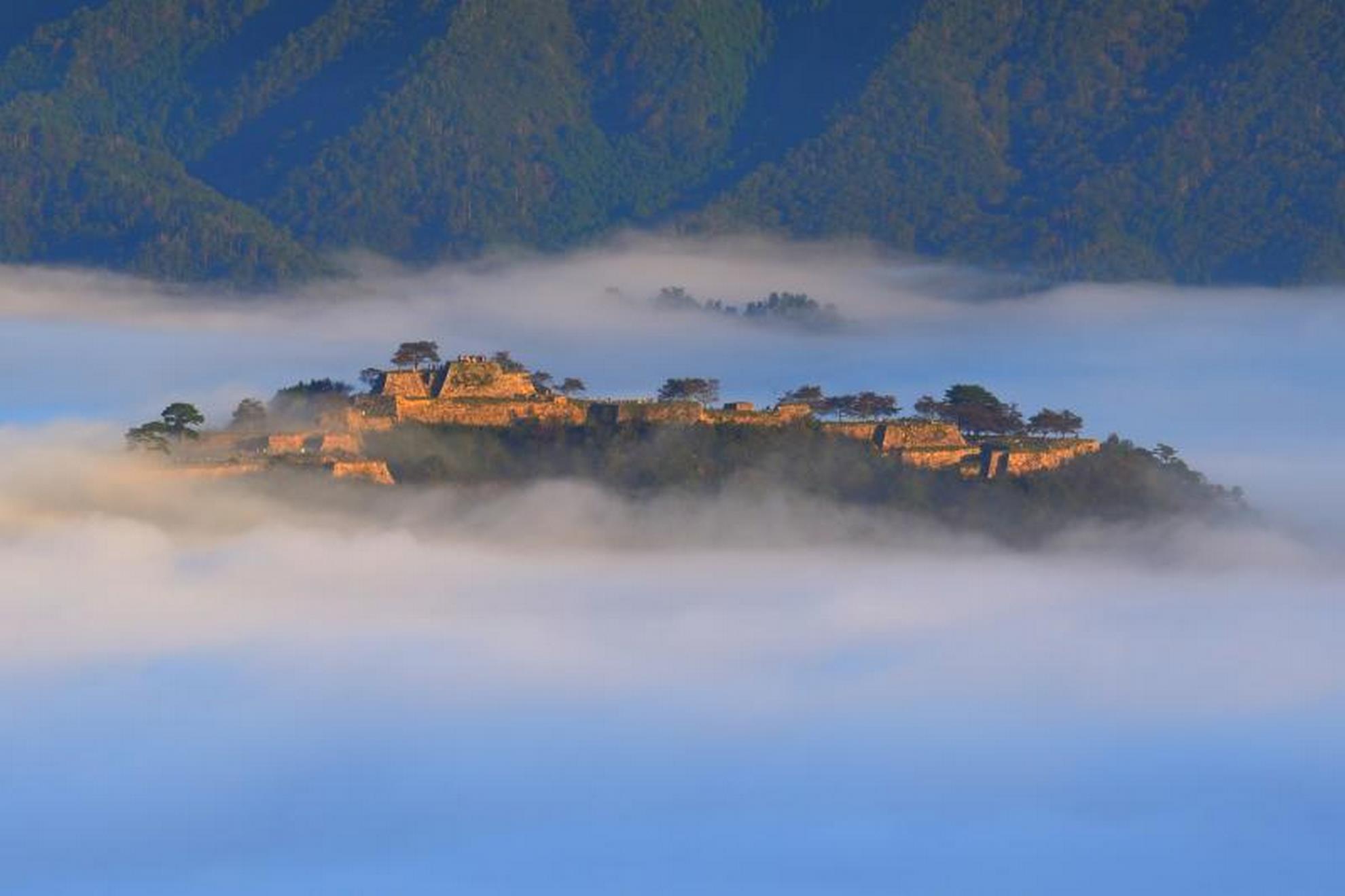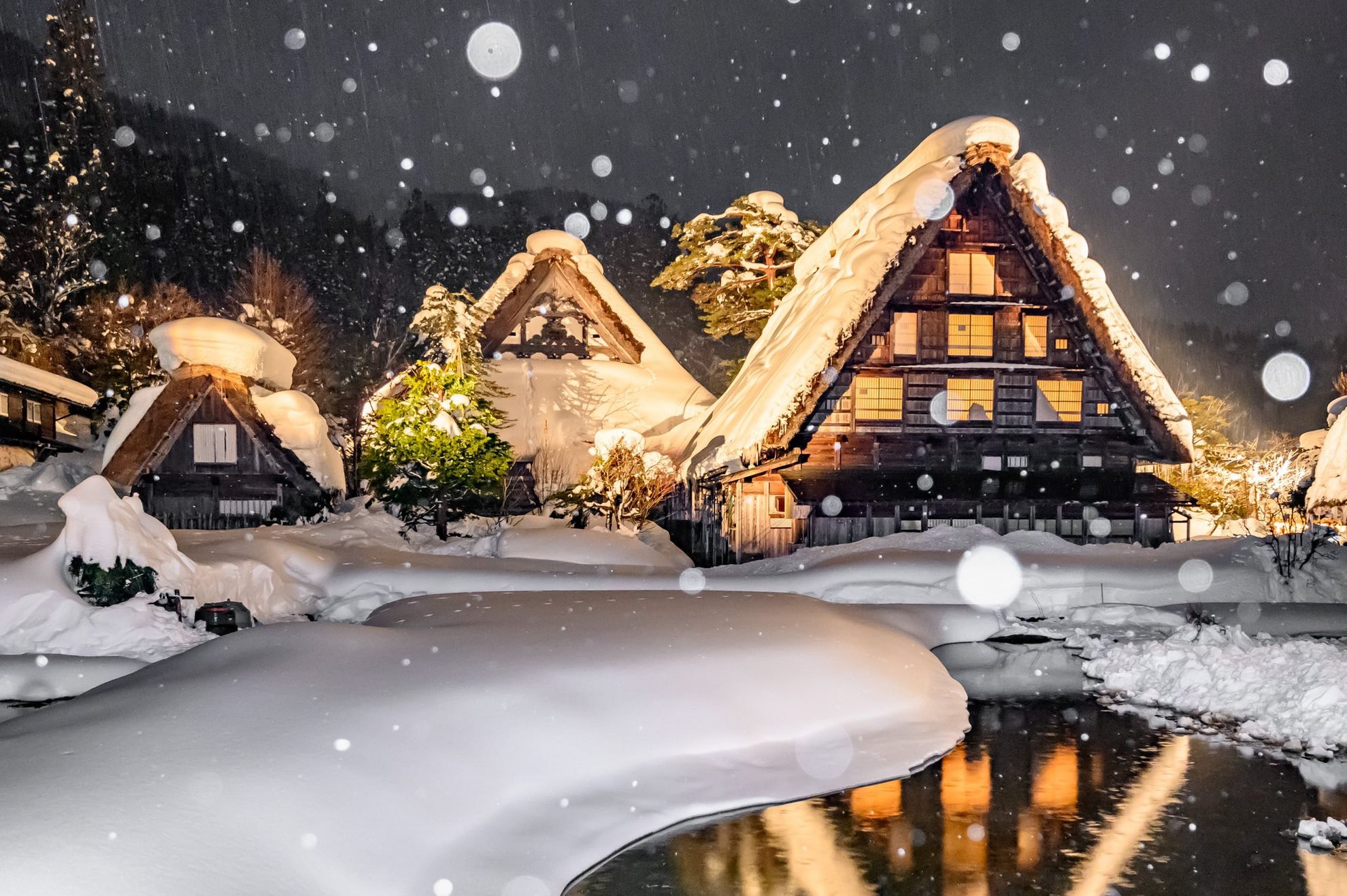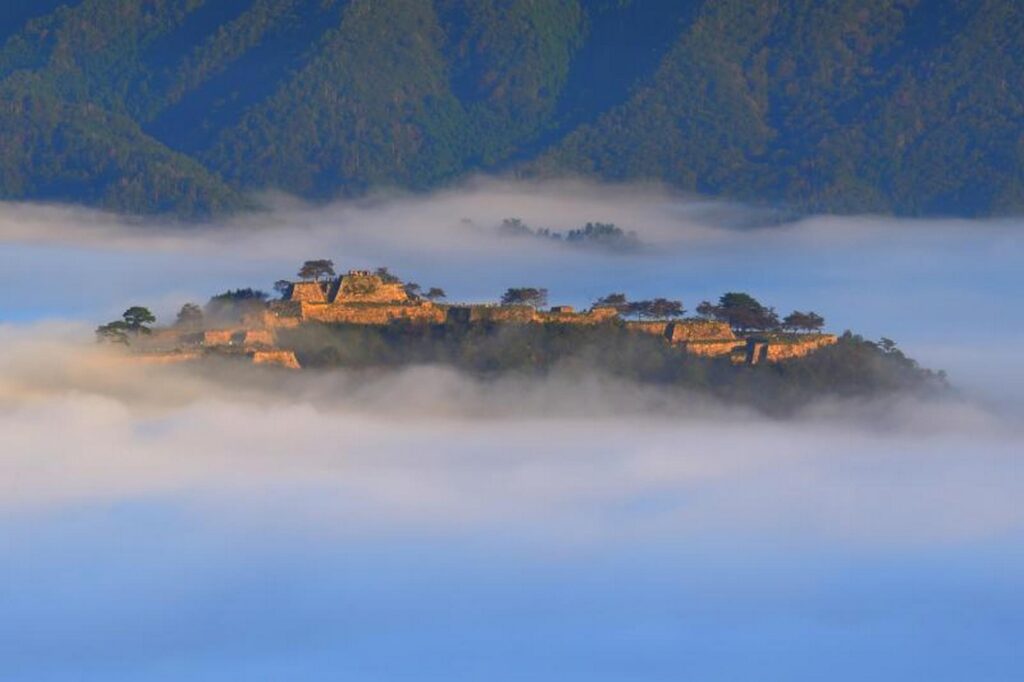
Perched in Asago City, Hyogo Prefecture, Takeda Castle Ruins stands as a magnificent historical site, captivating visitors worldwide as “Japan’s Machu Picchu” and the “Castle in the Sky.” Its most enchanting feature is the ethereal sea of clouds (Unkai), which often appears on crisp autumn mornings, transforming the ruins into a spectacle that truly appears to float among the clouds. For international travelers eager to witness this breathtaking sight, planning a trip within Japan, including complex transportation, can seem daunting. Yet, this guide aims to simplify your journey, offering a comprehensive resource to confidently plan an unforgettable adventure to Takeda Castle Ruins. We cover its profound history, efficient access methods, prime viewing times and spots for the Unkai, and opportunities for exploring charming nearby attractions. With this article, you will gain practical knowledge to fully immerse yourself in the majestic beauty of Takeda Castle Ruins, ensuring a smooth and memorable Japanese travel experience.
By utilizing the insights within this article, you will transform any travel uncertainties into clear, actionable plans, unlocking a seamless and profoundly enriching journey to one of Japan’s most spectacular historical sites.

I’m worried about Japan’s complex transportation and how to gather accurate travel information.

Rest assured, this article simplifies your travel planning process.
※What you will discover in this article
- The reasons Takeda Castle Ruins is called “Japan’s Machu Picchu” and “Castle in the Sky,” along with its historical background
- Access methods from major cities like Osaka and tips for a smooth visit
- Optimal seasons, locations, and viewing methods for experiencing the breathtaking sea of clouds
- Charming surrounding attractions and strategies for efficient trip planning
- Unveiling Takeda Castle Ruins Japan's Ethereal Sky Fortress
- Journey Through the Rich History of Takeda Castle Ruins
- Practical Guide for Visiting Takeda Castle Ruins
- Expanding Your Adventure Beyond Takeda Castle Ruins
- Planning Your Unforgettable Trip to Takeda Castle Ruins
- Frequently Asked Questions【Travel Guide】Takeda Castle Ruins: Plan Your Trip to Japan's Castle in the Sky (FAQ)
- Summary of【Travel Guide】Takeda Castle Ruins: Plan Your Trip to Japan's Castle in the Sky
Unveiling Takeda Castle Ruins Japan’s Ethereal Sky Fortress
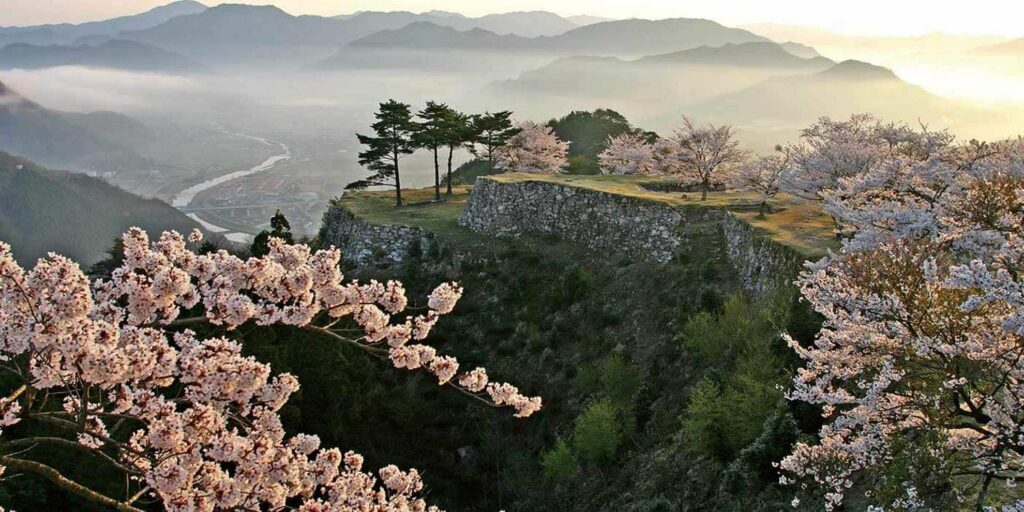
- The allure of Takeda Castle Ruins as Japan’s Machu Picchu
- Understanding the Castle in the Sky phenomenon
- Reasons to explore Takeda Castle Ruins
Takeda Castle Ruins is truly a captivating destination, uniquely blending dramatic natural beauty with profound historical significance, especially as Japan’s “Castle in the Sky” or its “Machu Picchu”. You will discover why it’s celebrated as the “Machu Picchu of Japan,” explore the fascinating “Castle in the Sky” phenomenon, and uncover compelling reasons to explore its ancient stone walls. A visit promises an unforgettable experience that transcends mere sightseeing, connecting you with Japan’s rich past and stunning natural landscapes.
The allure of Takeda Castle Ruins as Japan’s Machu Picchu
The comparison of Takeda Castle Ruins to the “Machu Picchu of Japan” highlights its dramatic mountaintop setting and profound mystique, making it a truly unique site. While Machu Picchu features extensive preserved structures, Takeda Castle is renowned for its remarkably intact 16th-century stone walls, which form the intricate foundations of what was once a formidable stronghold at an altitude of approximately 353 meters in Asago City, Hyogo Prefecture.
| Aspect | Takeda Castle Ruins | Machu Picchu |
|---|---|---|
| Primary Allure | Intact 16th-century stone walls, dramatic mountaintop setting | Extensive preserved structures, ancient city remains |
| Location & Altitude | Hyogo Prefecture, Japan (approx. 353m) | Cusco Region, Peru (approx. 2,430m) |
| Main Experience | Historical and architectural appreciation of stonework, panoramic vistas | Exploration of ancient city, Inca heritage |
| “Machu Picchu of Japan” | Comparison based on mountaintop mystique, not structural preservation | Original site, extensive ancient city |

So, what exactly makes Takeda Castle similar to Machu Picchu, and what should I expect?

It’s all about the breathtaking setting and the enduring historical spirit, not just the visible ruins.
This distinction ensures visitors can fully appreciate the site’s unique historical significance and natural splendor, regardless of whether the famous “sea of clouds” graces their visit.
Understanding the Castle in the Sky phenomenon
The “Castle in the Sky” phenomenon, known as Unkai (雲海) in Japanese, refers to the breathtaking sight where dense fog blankets the valleys below, making the castle’s stone foundations appear to float miraculously in the air. This ethereal spectacle is most common in the early mornings, specifically from late September through late November or early December, often between dawn and approximately 8:00 AM, with October and November being particularly favorable months for optimal viewing.
| Unkai Factor | Description |
|---|---|
| Best Season | Late September to early December (October and November are ideal) |
| Best Time | Early mornings, typically dawn to approximately 8:00 AM |
| Weather Conditions | Requires clear skies, light winds, and thick fog in the valleys |
| Visibility | Never guaranteed; highly dependent on specific atmospheric conditions |
| Forecast Tool | Asago City portal (asabura.jp/unkaiforecast) provides a seasonal forecast |

What are the chances of seeing this “sea of clouds” during my trip, and how can I maximize them?

While it’s weather-dependent, planning your visit in autumn mornings and checking forecasts increases your chances.
Even without the Unkai, the site’s historical significance, the vibrant autumn leaves, or the delicate cherry blossoms still make a journey to Takeda Castle Ruins a deeply rewarding experience.
Reasons to explore Takeda Castle Ruins
Beyond the iconic Unkai phenomenon, there are compelling reasons to explore Takeda Castle Ruins, offering a rich experience for every visitor. The castle’s remarkably preserved 16th-century stone walls, attributed largely to Akamatsu Hirohide’s extensive renovations in 1585, invite you to walk through history and discover its various baileys, including the Honmaru (main keep) and the expansive Minami-Senjo (largest bailey).
| Reason | Details |
|---|---|
| Historical Immersion | Explore the intact 16th-century stone walls and former baileys like Honmaru and Minami-Senjo. |
| Architectural Craftsmanship | Observe advanced masonry techniques such as “Nozura-zumi” and “Sangi-zumi” enduring for over 400 years. |
| Panoramic Views | Enjoy breathtaking 360-degree vistas of the surrounding Hyogo Prefecture landscape from the castle’s high vantage point. |
| Unique Discoveries | Find the impressive “kagami ishi” (mirror stone) and a popular heart-shaped stone within the ruins. |
| Time Commitment | Allocate at least 30 to 60 minutes for a thorough exploration of the ruins themselves. |

Besides the clouds, what else makes exploring Takeda Castle Ruins so special and worth my time?

The enduring history within its stone walls and the stunning panoramic views offer a deep and memorable experience.
A visit to Takeda Castle Ruins offers a profound historical and architectural journey, promising a unique connection to Japan’s turbulent Sengoku period and the enduring beauty of its ancient fortresses.
Journey Through the Rich History of Takeda Castle Ruins
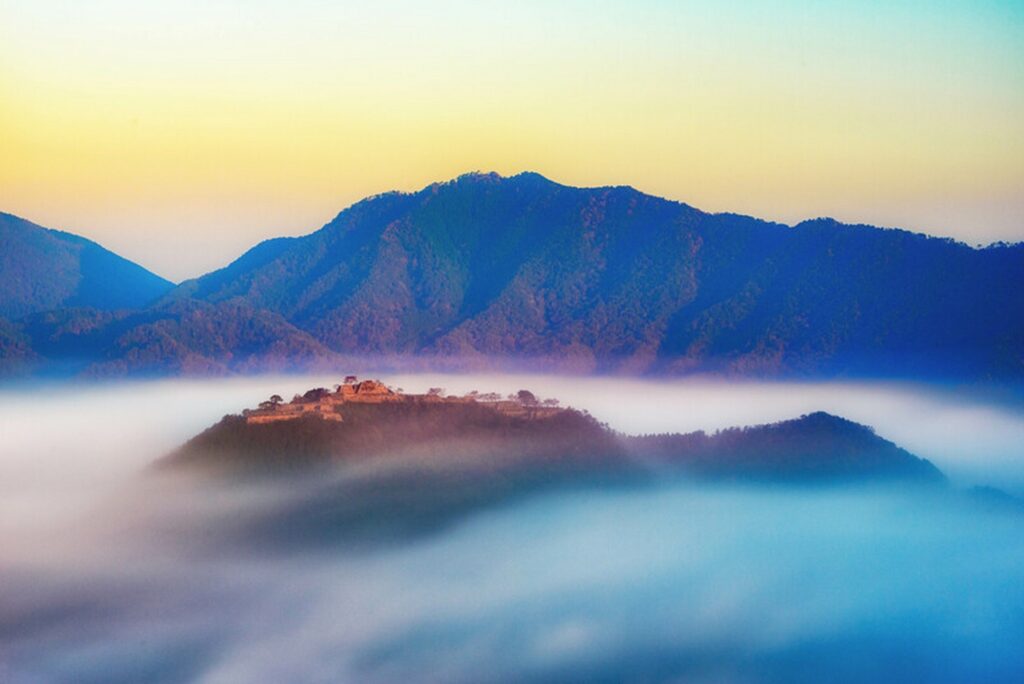
- Ancient chronicles of Takeda Castle’s construction
- The enduring stonework of Takeda Castle Ruins
- Key areas within Takeda Castle’s architectural remains
Takeda Castle Ruins boasts a rich and profound history, with its imposing stone walls silently recounting tales of Japan’s turbulent feudal past. Here, you will discover the ancient origins and pivotal moments of its construction, understand the enduring strength of its unique stonework, and explore the key architectural areas that unveil its former grandeur. Stepping onto this historic site offers a unique opportunity to connect deeply with the powerful legacy of samurai eras.
Ancient chronicles of Takeda Castle’s construction
The history of Takeda Castle Ruins is deeply rooted in Japan’s turbulent Sengoku period, a time of widespread civil conflict. The castle’s construction is believed to have commenced around 1443 under the esteemed regional lord, Yamana Sozen, establishing it as a crucial strategic stronghold. For generations, the Otagaki clan then governed this vital fortress, playing a significant role in the affairs of the Tajima region. However, a dramatic shift occurred in 1580 when the castle ultimately fell to the formidable forces of Toyotomi Hideyoshi, a pivotal figure in Japan’s unification.

What was the main purpose of building such a large castle on a mountain?

The primary purpose was to establish a strategic military stronghold in a naturally defensible location.
This initial phase, marked by shifting allegiances and strategic importance, profoundly shaped the formidable castle that once stood on these impressive foundations.
The enduring stonework of Takeda Castle Ruins
The awe-inspiring stone walls that define Takeda Castle Ruins today are largely attributed to the extensive renovations undertaken by Akamatsu Hirohide in 1585. These magnificent fortifications were constructed using sophisticated Japanese stone masonry techniques, including Nozura-zumi, where natural, unworked stones are skillfully stacked with minimal gaps, and Sangi-zumi, characterized by its unique interlocking corner construction. These ingenious techniques have allowed the walls to miraculously endure for over 400 years, remarkably preserving the majestic scale of the castle’s golden age. The castle was finally abandoned in 1600 following Hirohide’s defeat and ritual suicide after the decisive Battle of Sekigahara, leaving behind a silent yet powerful monument.
| Stone Masonry Technique | Description |
|---|---|
| Nozura-zumi | Natural stones stacked with minimal gaps |
| Sangi-zumi | Stones interlocked skillfully at corners |

How did they manage to achieve such impressive, long-lasting construction?

This enduring strength is a testament to the remarkable ingenuity and craftsmanship of the builders of that era.
The precise artistry and longevity evident in every stone make these ruins an exceptional architectural and historical marvel.
Key areas within Takeda Castle’s architectural remains
Exploring Takeda Castle Ruins offers a captivating journey through its various baileys and defensive structures. You can wander through the Honmaru, or main keep, which stands as the castle’s highest point, providing truly breathtaking panoramic views of the surrounding Hyogo Prefecture landscape. To the south lies Minami-Senjo, the largest bailey, offering a clear sense of the castle’s expansive scale, while the Ninomaru, located north of the main keep, features benches that have even appeared in famous movie scenes. Unique historical elements also abound, such as the Kagami Ishi, a massive, glossy boulder near the entrance believed to have deterred enemies, and a distinctive heart-shaped stone that has become a popular point of interest for visitors. You can typically expect to spend 30 minutes to over an hour fully appreciating the intricate stonework and the serene atmosphere.
| Key Area | Features |
|---|---|
| Honmaru (Main Keep) | Highest point, panoramic views, central to the castle |
| Minami-Senjo | Largest bailey, located to the south |
| Ninomaru | North of Honmaru, features benches from a famous movie scene |
| Kagami Ishi | Massive, glossy boulder, believed to be a deterrent |
| Heart-shaped Stone | Unique stone shape, popular photo spot |

Are there any specific hidden gems or spots that tell a unique story?

Absolutely, each section, from the main keep to the unique stones, offers a glimpse into its rich past.
Each distinct area, with its own fascinating story and architectural nuances, makes your visit an incredibly immersive historical exploration.
Practical Guide for Visiting Takeda Castle Ruins
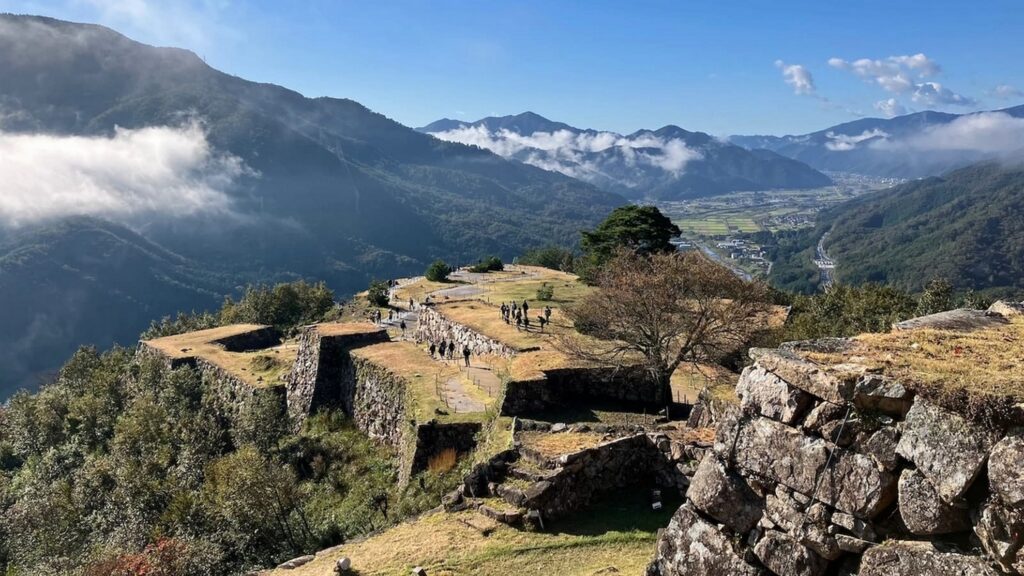
- Seamless access to Takeda Castle Ruins from Osaka and beyond
- Essential tips for a smooth visit to Takeda Castle
- What to expect from Takeda Castle Ruins reviews
- Best times and vantage points for the unkai experience
A visit to 竹田城跡 (Takeda Castle Ruins) requires careful planning to maximize your experience, ensuring seamless travel and a smooth exploration of its magnificent historical site. To make your journey hassle-free, this section will guide you through accessing Takeda Castle from major cities like 大阪 (Osaka), provide essential tips for a smooth visit, explain what to expect from common reviews, and reveal the best times and vantage points for witnessing the breathtaking 雲海 (sea of clouds) phenomenon. Prepare yourself for an unforgettable adventure at Japan’s 天空の城 (Castle in the Sky).
Seamless access to Takeda Castle Ruins from Osaka and beyond
When planning your trip to 竹田城跡, understanding the best routes from major Japanese cities is essential for a smooth journey. Whether you are departing from Tokyo, Kyoto, or 大阪 (Osaka), the journey typically involves leveraging Japan’s efficient train network.
For most travelers, the most common route starts with taking the Tokaido/Sanyo Shinkansen to Himeji Station, renowned for its stunning Himeji Castle. From Himeji, you will transfer to the JR Bantan Line, which directly serves 竹田駅 (Takeda Station) at the foot of the castle mountain. This segment typically takes between 90 to 110 minutes, often requiring a transfer at Teramae Station. Travelers coming from 城崎温泉 (Kinosaki Onsen) can also easily reach Takeda; take the JR Sanin Line to Wadayama (about 55 minutes), then transfer to the JR Bantan Line for a quick 10-minute ride to Takeda Station, totaling approximately 80 minutes.
Many foreign visitors benefit greatly from utilizing various Japan Rail Passes for these journeys.
| Pass Name | Covered Routes (Example) |
|---|---|
| Japan Rail Pass | Nationwide JR trains, including Shinkansen to Himeji |
| JR Kansai Wide Pass | Kansai region, including Himeji to Takeda Station |
| JR Kansai Hiroshima Area Pass | Kansai and Hiroshima region, including Himeji to Takeda Station |
These passes offer a cost-effective way to travel throughout Japan, allowing you to seamlessly integrate your visit to Takeda Castle Ruins into a broader itinerary. Planning your train connections in advance ensures a comfortable and efficient trip to this magnificent historical site.
Essential tips for a smooth visit to Takeda Castle
For a truly rewarding and comfortable visit to 竹田城跡, it is crucial to prepare for both the journey to the summit and the facilities available on site. These practical insights will ensure you can fully immerse yourself in the historical grandeur of Japan’s 天空の城.
Upon arriving at 竹田駅 (Takeda Station), you have several options to reach the castle ruins. The most convenient method is often the 天空バス (Tenku Bus), which takes approximately 20 minutes from 竹田駅 to the 竹田城跡 bus stop, costing 300 JPY one way or 500 JPY for a 1-day pass. From this bus stop, it is a manageable 20-minute walk (around 800 meters) to the castle entrance. Alternatively, if you enjoy hiking, trails like the Hyomai Shrine mountain trail offer a more direct, approximately 40-minute walk from Takeda Station. Taxis are also available from the station to the trailhead, taking about 15 minutes and costing around 2000 JPY.
Crucially, wear comfortable 登山靴 (hiking shoes) or sneakers and appropriate clothing, as the paths leading to and within the castle are steep, uneven, and involve numerous steps.
Operating Hours and Important Closures
| Season | Operating Hours | Last Entry | Closure Period |
|---|---|---|---|
| Spring (Mar-May) | 8:00 AM – 6:00 PM | 5:30 PM | N/A |
| Summer (Jun-Aug) | 6:00 AM – 6:00 PM | 5:30 PM | N/A |
| Autumn (Sep-Nov) | 4:00 AM – 5:00 PM | 4:30 PM | N/A |
| Winter (Dec-Jan 3) | 10:00 AM – 2:00 PM | 1:00 PM | N/A |
| January 4 – Feb | Fully Closed to Visitors | N/A | Annually |
Admission for adults (high school students and older) is 500 JPY, while junior high school students and younger can enter for free. Plan to spend 30 to 60 minutes exploring the ruins themselves, allowing ample time to appreciate the intricate 石垣 (stone walls) and panoramic views.

I heard there are no restrooms directly at Takeda Castle Ruins. Is that true?

Indeed, you should use the facilities at Yamashiro-no-Sato or near the bus stop before heading up.
A very important tip: there are no restrooms at the Takeda Castle Ruins site itself. Please utilize the facilities at 山城の郷 (Yamashiro-no-Sato) or near the Takedajo-seki bus stop/visitor center before beginning your ascent. Yamashiro-no-Sato is a crucial hub, offering not only restrooms but also local 但馬牛 (Tajima beef) restaurants and souvenir shops. Be aware that the terrain is challenging with steep, uneven paths, making it unsuitable for wheelchairs or those with significant mobility impairments. By keeping these practical points in mind, your visit to Takeda Castle will be as comfortable and enjoyable as possible.
What to expect from Takeda Castle Ruins reviews
When exploring 竹田城跡 reviews online, you will often find visitors captivated by its historical depth and stunning natural beauty, regardless of the famous 雲海 (sea of clouds) phenomenon. Understanding these common sentiments can help shape your expectations for a fulfilling visit.
Many reviews highlight the awe-inspiring experience of wandering among the 石垣 (stone walls), which are remarkably intact 16th-century foundations, providing a tangible connection to Japan’s turbulent Sengoku period. While the comparison to “Japan’s Machu Picchu” often arises due to its dramatic mountaintop setting, visitors frequently note that 竹田城 is celebrated for its impressive stone craftsmanship rather than standing castle structures. Reviews consistently praise the panoramic views from the site, even when the 雲海 is absent, emphasizing the profound historical and architectural experience offered by the enduring stone walls.
However, it is important to be aware of some common practical observations.
| Aspect | Common Review Insights |
|---|---|
| Cloud Sea (Unkai) | Beautiful but weather-dependent; multiple visits recommended if catching it is a priority |
| Physical Demands | Steep, uneven paths and numerous steps; comfortable shoes essential; challenging for mobility-impaired |
| Accessibility | Not wheelchair-friendly due to challenging terrain |
| Bus Service | Can be infrequent or crowded during peak seasons |
| Overall Value | Highly rewarding historical and scenic site even without unkai |

I’m wondering if visiting is still worth it even if the cloud sea isn’t there?

Absolutely, the historical value of the stone walls and the breathtaking panoramic views make it a worthwhile trip every time.
Ultimately, reviews reinforce that 竹田城跡 offers a profound and memorable experience even without the ethereal 雲海, making it a highly recommended destination for history buffs and nature lovers alike.
Best times and vantage points for the unkai experience
The ethereal 雲海 (unkai), or 雲の海, is a breathtaking natural phenomenon that transforms 竹田城跡 into a true 天空の城 (Castle in the Sky). For many, witnessing this iconic sea of clouds is the ultimate goal of their visit, requiring precise timing and choosing the right vantage point.
The 雲海 is most commonly observed in the early mornings, typically from late September through late November or early December, particularly before approximately 8:00 AM. 10月 (October) and 11月 (November) are often cited as the most favorable months for this spectacle. However, its appearance is entirely dependent on specific weather conditions, requiring clear skies, light winds, and thick fog in the valleys below. It is important to know that seeing the 雲海 is never guaranteed, so checking the Asago City portal site’s “Sea of Clouds Forecast” (asabura.jp/unkaiforecast) during the season can provide valuable guidance.
| Viewing Spot | Features | Travel/Walk Time (from nearest parking) |
|---|---|---|
| From the Castle Ruins | Experience being “above the clouds,” immerse in history | 20-minute walk from Takedajo-seki bus stop |
| 立雲峡 (Ritsuunkyo) | Most popular for panoramic 竹田城跡 views amidst clouds | |
| First Observation Deck | Best panoramic view, requires strenuous hike | 40-minute hike from Ritsuunkyo parking |
| Second Observation Deck | Clear view of 石垣, slightly less demanding hike | 20-minute walk from Ritsuunkyo parking |

What if I visit but the 雲海 doesn’t appear? Is Ritsuunkyo still worth it?

Even without the 雲海, Ritsuunkyo offers stunning panoramic views of the surrounding mountains and is a popular cherry blossom spot in spring.
While experiencing the 雲海 is a magnificent highlight, 竹田城跡 remains a profoundly beautiful and historically rich site even without this phenomenon, ensuring a rewarding visit at any time.
Expanding Your Adventure Beyond Takeda Castle Ruins
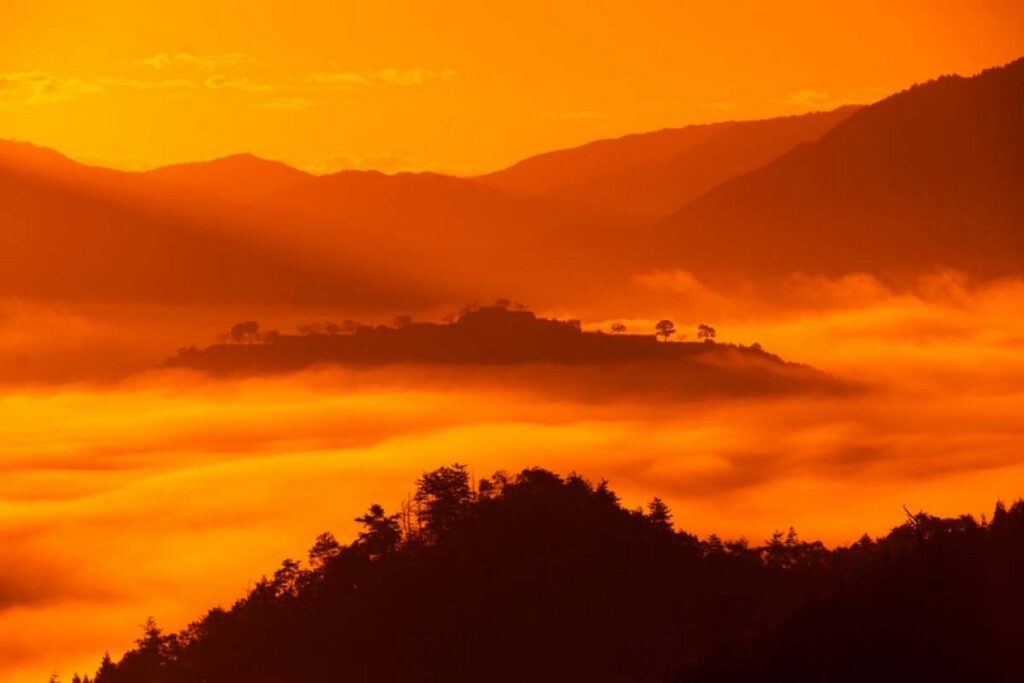
- Discovering local charms around Takeda Castle Ruins
- Combining your trip with Hyogo Prefecture castles
- Connecting journeys considerations Amanohashidate and Kumano Japan
Expanding your adventure beyond Takeda Castle Ruins is paramount for a deeper immersion into Japan’s rich history, culture, and diverse natural beauty. Discover local charms nearby, strategically combine your trip with other Hyogo Prefecture castles, and consider connecting journeys to destinations like Amanohashidate and Kumano Japan for a truly comprehensive experience. While Takeda Castle Ruins offers an incredible standalone visit, broadening your exploration of the surrounding region promises to make your Japanese journey even more profound and unforgettable.
Discovering local charms around Takeda Castle Ruins
The term “local charms” refers to the unique appeal and characteristics specific to a region, which around Takeda Castle Ruins includes historic townscapes and local specialties. Right at the foot of Kojozan, the historic Takeda Castle Town retains its ancient ambiance with several temples and old stone walls, offering a glimpse into the daily life of a bygone era. Hotel EN, a beautifully renovated sake brewery, provides accommodation and exhibits detailing the castle’s history, including a full-size recreation of a stone wall. Furthermore, the Ikuno Silver Mine, established in the 16th century and later modernized by French engineers, offers fascinating insight into Japan’s industrial revolution and its lasting impact on the region.
| Attraction | Highlight | Notes |
|---|---|---|
| Takeda Castle Town | Historic ambiance with ancient stone walls and temples | Nestled at the foot of Kojozan |
| Yamashiro-no-Sato | Local cuisine (Tajima beef), souvenirs, resource center | Essential stop for restrooms and information |
| Hotel EN | Renovated sake brewery with accommodation and castle exhibits | Offers a unique historical stay |
| Ikuno Silver Mine | Historic site showcasing Japan’s industrial revolution | Provides insight into past industries |

I’m curious about the hidden charms surrounding Takeda Castle Ruins.

Local history, delicious food, and unique experiences await you.
Exploring these local charms around Takeda Castle Ruins elevates your overall Japanese travel experience, allowing you to appreciate the vibrant culture and history of the Hyogo region beyond the castle walls.
Combining your trip with Hyogo Prefecture castles
Hyogo Prefecture offers a multitude of historical sites beyond Takeda Castle Ruins, making it highly practical to combine your visit with other prominent destinations such as the UNESCO World Heritage Site Himeji Castle or Kinosaki Onsen, a 1,400-year-old hot spring resort. By integrating these locations into your itinerary, you can efficiently delve deeper into Japan’s rich history and diverse culture. For example, a direct train connection via the JR Bantan Line makes Himeji Castle accessible from Takeda Station in approximately 90 to 110 minutes. Alternatively, Kinosaki Onsen is roughly 80 minutes away by train, where you can stroll the picturesque town in traditional yukata and enjoy its seven public baths.
| Destination | Highlight | Access from Takeda Station | Travel Time |
|---|---|---|---|
| Himeji Castle | UNESCO World Heritage Site, magnificent white castle | JR Bantan Line | 90-110 minutes |
| Kinosaki Onsen | 1,400-year-old hot spring resort, 7 public baths | JR Sanin Line to Wadayama, then JR Bantan Line | Approx. 80 minutes |
| Arima Onsen | One of Japan’s oldest and most famous hot springs | Requires transfers, not direct | Varies |
| Kobe City | Vibrant port city, international influences, diverse attractions | Requires transfers to JR Sanyo Main Line | Approx. 2 hours |

Is it efficient to combine a visit to Takeda Castle Ruins with other castles or attractions in Hyogo Prefecture?

Absolutely, many captivating places like Himeji Castle and Kinosaki Onsen are easily accessible by train.
Visiting these historic sites within Hyogo Prefecture significantly enriches your experience, making your journey through Japan’s storied past even more comprehensive and memorable.
Connecting journeys considerations Amanohashidate and Kumano Japan
Many travelers consider extending their journey from Takeda Castle Ruins to include Amanohashidate in Kyoto Prefecture or the Kumano Kodo pilgrimage trails in Wakayama Prefecture. Amanohashidate, renowned as one of Japan’s three most scenic views, requires a train journey of approximately 2 hours 48 minutes to 3 hours 19 minutes from Takeda, while driving reduces the travel time to about 1 hour 4 minutes. In contrast, the Kumano Kodo, a significant spiritual and natural experience listed as a World Heritage site, is geographically distant from Takeda Castle Ruins with no direct train or bus connections, meaning travel requires substantially more time and effort.
| Destination | Type of Attraction | Travel Time from Takeda Castle Ruins | Considerations |
|---|---|---|---|
| Amanohashidate | One of Japan’s Three Scenic Views | By train: 2h 48m – 3h 19m, By car: approx. 1h 4m | Feasible for multi-day trip |
| Kumano Kodo | World Heritage Pilgrimage Trails | Geographically distant, no direct connections | Best as a separate, dedicated journey due to travel time |

Is it realistic to go to Amanohashidate or Kumano Kodo from Takeda Castle Ruins?

Amanohashidate is possible with careful planning, but Kumano Kodo is best saved for a separate trip.
Considering travel efficiency, Amanohashidate is best included as part of a multi-day itinerary, potentially requiring an overnight stay in its vicinity. Meanwhile, the Kumano Kodo is most effectively experienced as a separate, dedicated journey, allowing ample time to fully immerse yourself in its spiritual and natural grandeur.
Planning Your Unforgettable Trip to Takeda Castle Ruins
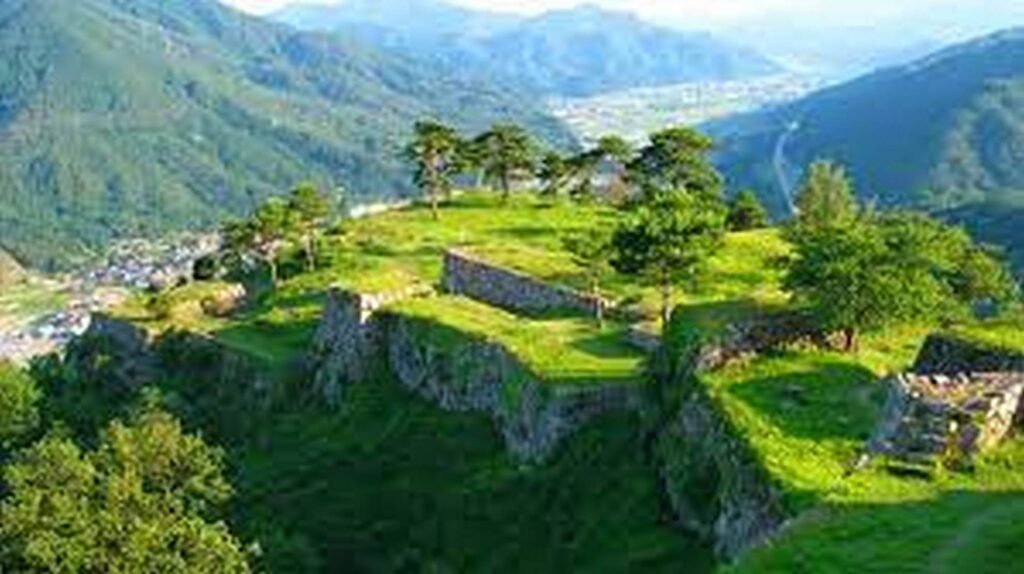
- Leveraging major travel websites for your itinerary
- Crafting your ideal Takeda Castle Ruins experience
- Booking your seamless Japan adventure
Planning your journey to the Takeda Castle Ruins is essential for a smooth and rewarding adventure through Japan’s breathtaking landscapes. By leveraging major travel websites for your itinerary, you can craft your ideal Takeda Castle Ruins experience, ensuring a seamless Japan adventure from start to finish. A well-thought-out plan allows you to maximize your time and fully immerse yourself in the beauty of Japan’s “Castle in the Sky.”
Leveraging major travel websites for your itinerary
Major travel websites are online platforms that consolidate information and booking services for flights, accommodations, and tours, making trip planning significantly simpler. Using these platforms can save you hours of research; for example, a single site can offer thousands of hotel options and hundreds of flight routes, presenting diverse choices.

I want to find the best deals and organize everything in one place.

Using these comprehensive platforms streamlines your planning and helps secure good value.
How about checking out travel plans on major travel websites?
| Travel Company | Official Website Link | Features |
|---|---|---|
| Booking.com | Visit Official Website | Wide range of accommodations, flexible booking options, competitive prices |
| Trip.com | Visit Official Website | Comprehensive travel services, especially strong in Asia for flights, hotels, and trains |
| Agoda | Visit Official Website | Specializes in hotel bookings, often offering competitive rates in Asia |
| Expedia | Visit Official Website | One of the largest online travel agencies, offering flight+hotel packages, car rentals, and activities |
| trivago | Visit Official Website | Hotel metasearch engine comparing prices from various booking sites |
| Tripadvisor | Visit Official Website | Extensive user reviews for hotels, restaurants, and attractions, with booking options |
| Klook | Visit Official Website | Specializes in booking local tours, activities, and unique experiences |
These platforms are invaluable tools for comparing options and building a customized itinerary that fits your preferences and budget.
Crafting your ideal Takeda Castle Ruins experience
Crafting your ideal experience means tailoring your visit to Takeda Castle Ruins to align perfectly with your interests and preferences, ensuring a truly memorable journey. Consider the specific 雲海 (sea of clouds) viewing season from late September to late November, when daily chances for this magnificent sight improve significantly.

How can I make sure I see the amazing “Castle in the Sky” and avoid any surprises?

Planning your visit around the peak season and checking daily forecasts enhances your chances.
| Category | Essential Tips |
|---|---|
| Optimal Seasons | Best for 雲海 (sea of clouds) from late September to late November, typically in the early morning |
| Operating Hours | Vary by season (Spring, Summer, Autumn, Winter) and require advance check; 竹田城跡 (Takeda Castle Ruins) is closed from January 4th to late February |
| Access Methods | Common options are 電車 (train) via the JR Bantan Line and the 天空の城 (Castle in the Sky) bus, known as the Tenku Bus |
| Admission Fee | 500 JPY for adults (high school age and above) |
| Appropriate Attire | Wear comfortable 登山靴 (hiking shoes) and suitable clothing due to steep, uneven paths |
| On-site Facilities | No restrooms at the ruins; use facilities at Yamashiro-no-Sato (山城の郷) before ascending |
| Photography Spots | 絶景 (breathtaking view) from Ritsuunkyo (立雲峡) 展望台 (observation deck) is highly recommended for 撮影 (photography) |
| Accessibility | Challenging terrain unsuitable for wheelchairs or those with significant mobility impairments |
By keeping these practical tips in mind, your visit to this historical 山城 (mountain castle) will be as smooth and enjoyable as possible.
Booking your seamless Japan adventure
A seamless Japan adventure means all aspects of your trip, from flights and accommodations to local tours, are smoothly coordinated and stress-free, allowing you to fully enjoy your journey. Many foreign tourists find that booking comprehensive packages through major travel sites saves an average of 15% compared to booking separately, covering flights and at least three nights of hotel stays.

I want to make sure all my bookings are secure and integrated, so I don’t have any last-minute worries.

Consolidating your bookings through reliable platforms provides peace of mind and simplifies your travel logistics.
- Start early: Begin your booking process several months in advance, especially for peak seasons like
雲海(sea of clouds)見頃(best time to see) or during public holidays - Compare options: Use meta-search engines like trivago to compare hotel prices across various sites, then visit direct booking platforms like Booking.com or Agoda for detailed listings
- Consider packages: Explore flight+hotel packages on Expedia or Trip.com for potential cost savings and simplified planning
- Secure activities: Book unique experiences or guided tours, including local
周辺観光(local sightseeing) near竹田城跡(Takeda Castle Ruins), through platforms like Klook - Read reviews: Consult Tripadvisor for reviews on accommodations, restaurants, and attractions to make informed decisions
- Confirm details: Always double-check your booking confirmations, including dates, times, and specific instructions for
アクセス(access) to Takeda Castle Ruins - Utilize travel passes: If applicable, factor in
JRパス(JR Pass) or other regional passes when planning train travel to minimize costs and simplify your交通(transportation)
By strategically utilizing these platforms, you can efficiently plan and book every element of your unforgettable trip to 日本 (Japan), focusing on enjoying your 絶景 (breathtaking scenery) and 歴史 (history) experience.
Frequently Asked Questions【Travel Guide】Takeda Castle Ruins: Plan Your Trip to Japan’s Castle in the Sky (FAQ)
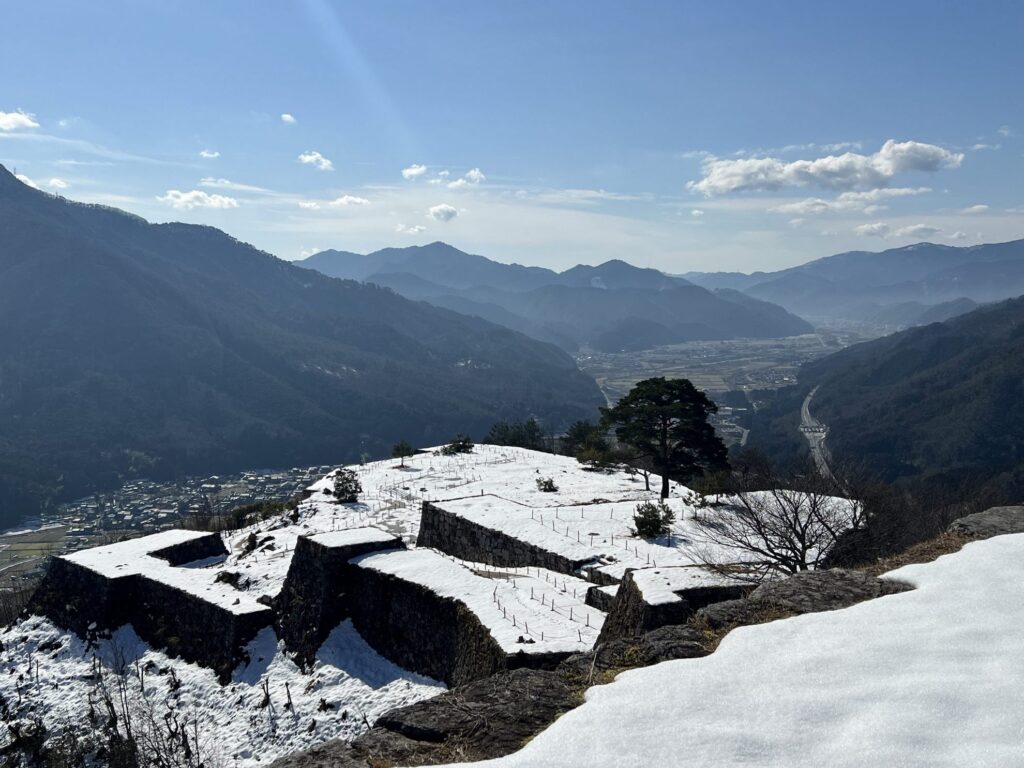
- QCan Takeda Castle Ruins be enjoyed even without the sea of clouds?
- A
Yes, Takeda Castle Ruins offers a deeply rewarding experience even when the famous sea of clouds is not present. Its primary appeal lies in the magnificently preserved 16th-century stone walls, which provide a profound historical and architectural experience. From the ruins, you can also enjoy breathtaking panoramic views of the surrounding Hyogo Prefecture landscape, making it a valuable visit regardless of the weather.
- QAre there any facilities like restrooms or shops directly at Takeda Castle Ruins?
- A
There are no restrooms or shops directly at the Takeda Castle Ruins site itself. You must use the facilities located at Yamashiro-no-Sato or near the Takedajo-seki bus stop/visitor center before starting your ascent to the ruins. Yamashiro-no-Sato serves as a crucial hub, offering restrooms, local Tajima beef restaurants, and souvenir shops for your convenience.
- QWhat is the recommended way to get from Takeda Station to the castle ruins, and what are the physical demands?
- A
The most convenient way to reach the Takeda Castle Ruins from Takeda Station is by taking the Tenku Bus to the Takedajo-seki bus stop, followed by a manageable 20-minute walk to the castle entrance. Hiking trails are also available but are generally steeper and require a good physical condition. Regardless of your chosen route, the paths within the Takeda Castle Ruins are steep and uneven, so wearing comfortable walking shoes or hiking boots is essential for your safety and enjoyment.
- QHow much time should I allocate for visiting Takeda Castle Ruins and exploring the site?
- A
You should allocate at least 30 to 60 minutes for exploring the Takeda Castle Ruins site itself, allowing ample time to appreciate the intricate stone walls and panoramic views. This duration does not include your travel time from Takeda Station (approximately 20 minutes by Tenku Bus) or the subsequent 20-minute walk from the bus stop to the entrance. It is recommended to plan for a total of 2 to 3 hours to fully experience the castle’s historical beauty without rushing.
- QCan I visit Takeda Castle Ruins during winter, and what should I expect?
- A
Takeda Castle Ruins is open from December 1st to January 3rd, but it is completely closed to visitors from January 4th through the end of February each year. During the open winter months, snow can create a magical snowscape with the stone walls, offering a unique and stunning view. However, paths may be slippery, and sudden closures can occur due to heavy snowfall, so always check the latest information before planning a winter visit.
- QCan I easily combine a visit to Takeda Castle Ruins with other nearby attractions or famous sites in Japan?
- A
Yes, Takeda Castle Ruins can be efficiently combined with other prominent attractions in Hyogo Prefecture. For example, Himeji Castle is easily accessible via the JR Bantan Line, and Kinosaki Onsen, a historic hot spring resort, is reachable by the JR Sanin Line. While Amanohashidate in Kyoto Prefecture is feasible for a multi-day trip, the Kumano Kodo pilgrimage trails in Wakayama Prefecture are geographically distant and are best considered as a separate, dedicated journey due to the travel time involved.
Summary of【Travel Guide】Takeda Castle Ruins: Plan Your Trip to Japan’s Castle in the Sky
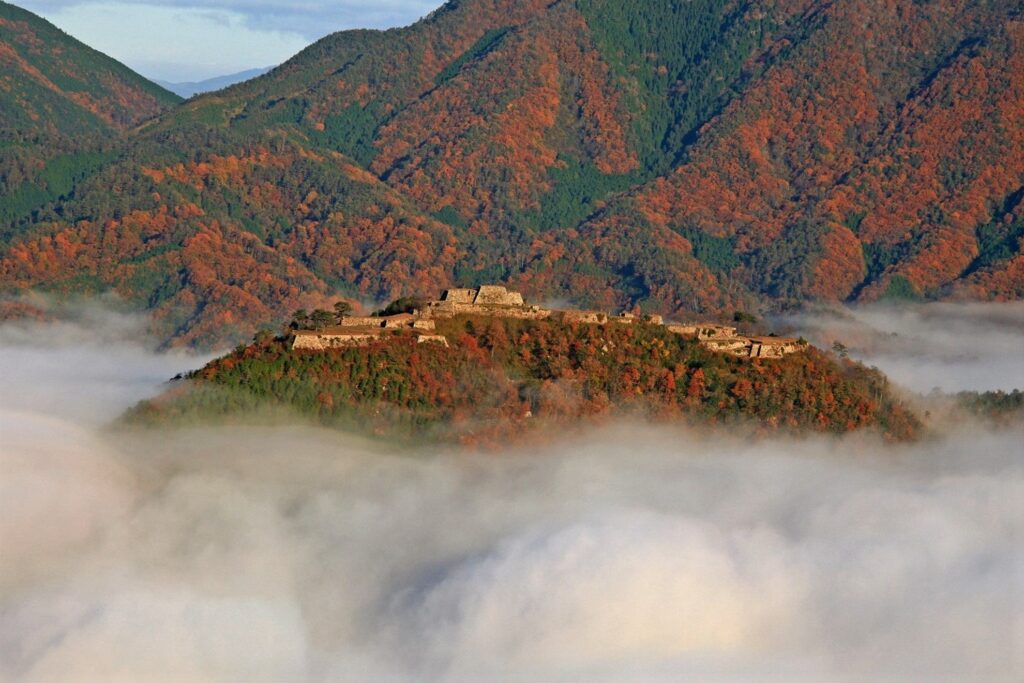
This article has provided a comprehensive guide to Takeda Castle Ruins, a magnificent historical site nestled in Asago City, Hyogo Prefecture. This destination captivates travelers worldwide as “Japan’s Machu Picchu” and the “Castle in the Sky,” with its ethereal sea of clouds offering an unforgettable breathtaking view. For international visitors, we have covered all essential information, from its rich history and detailed access methods to must-see highlights and efficient trip planning strategies, ensuring a smooth and worry-free journey to Takeda Castle Ruins. Please find the key takeaways from this page summarized below.
- Reasons why Takeda Castle Ruins is called “Japan’s Machu Picchu” and “Castle in the Sky,” along with its historical background
- The ethereal sea of clouds, appearing especially on crisp autumn mornings, as Takeda Castle Ruins’ greatest charm
- Optimal season for viewing the sea of clouds: early mornings from late September to early December, particularly October and November
- The sea of clouds as a natural phenomenon dependent on specific weather conditions and not guaranteed to appear
- Access methods to the castle ruins from JR Takeda Station via Tenku Bus or on foot
- Smooth train transportation options from Osaka and other major cities across Japan
- Essential comfortable hiking shoes and appropriate clothing for comfortable exploration of the ruins
- Absence of restrooms directly at Takeda Castle Ruins, requiring prior use of facilities like Yamashiro-no-Sato
- Typical visit duration of 30 minutes to 1 hour for exploring the castle ruins, with an admission fee of 500 JPY for adults
- Ritsuunkyo Observation Deck as a popular and recommended spot for photographing Takeda Castle Ruins and the breathtaking sea of clouds
- Charming surrounding attractions including Takeda Castle Town, Hotel EN, and Ikuno Silver Mine
- Feasibility of combining visits with other Hyogo Prefecture attractions like Himeji Castle and Kinosaki Onsen
- Efficient trip planning through leveraging major travel booking websites for accommodations and activities
- Annual closure period for Takeda Castle Ruins during winter, specifically from January 4th to late February
- The profound historical value of the magnificent stone walls and 360-degree panoramic views ensuring enjoyment even without the sea of clouds
We are confident that a journey to Takeda Castle Ruins will become a highlight of your trip to Japan. We encourage you to utilize the information provided in this article to plan your own wonderful experience at the mystical “Castle in the Sky.”
